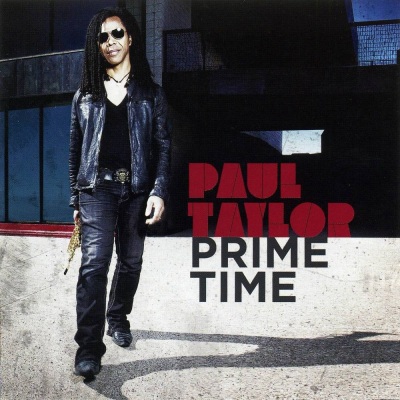
Prime Time
Contemporary jazz fans sure love their saxophonists. Just lake a look at the music charts. Saxophone players take up nine of the top 20 spots on the SmoothJazz.com radio airplay chart. Dave Koz and Boney James hold the top two spots, while Paul Taylor's latest recording, Prime Time, checks in at number 18 after just three weeks -- and it is rising fast. It's been that way in the fusion/contemporary jazz world for a long time – probably going all the way back to giants like Grover Washington, Jr. Fans hear the first few notes of a tenor sax, and hardly any other element seems to matter. That kind of popularity is both a blessing and a curse. It often lulled performers and producers into a risk adverse mode, and made them content to release bland instrumental versions of popular R&B songs. Contemporary jazz has moved away from that model in recent years. These days, contemporary jazz recordings contain as much R&B and funk music as jazz. That is definitely the case with Prime Time, and that's a good thing. Prime Time sports vocal cuts such as the neo-soul sounding "Can't Nobody" and the modern R&B female anthem "Space." The latter cut elevates Prime Time to a level above many records in this genre. "Space" is an inspired bit of R&B story telling, and could probably make the jump from contemporary jazz and AC formats to more youth oriented R&B stations if programmers give it a listen. "Space" stands as a warning to those indecisive brothers torn between settling down and creating some distance. The upshot – as the song's catchy hook makes clear – is your woman might not be there when you want to reconnect. Taylor shares his time with vocalists who are working with some strong lyrical material, and the saxophonist makes the most solos on these tracks. The instrumental tunes on Prime Time fall nicely into the groove of making space for Taylor – the star of the show – to display his improvisational skills. Music fans won't hear a lot of give and take among instrumentalists on Prime Time. However, the album largely avoids that press play feel that sometimes afflicts works in the contemporary/smooth jazz genre. There is nuance to the musicianship employed by the other players – a guitar riff accents Taylor's sax work on a track such as "Say No More." In short, Prime Time might remind some listeners of the way musicians with skills knew how to fit their jazz inspired licks in at just the right time when playing behind classic Motown and Stax hits. Prime Time is an album that shows how the palate available to contemporary jazz artists has expanded. This is, after all, fusion music, and that means artists like Taylor can mix and match styles as they see fit. And Paul Taylor does that as well as anyone. ~ Howard Dukes
